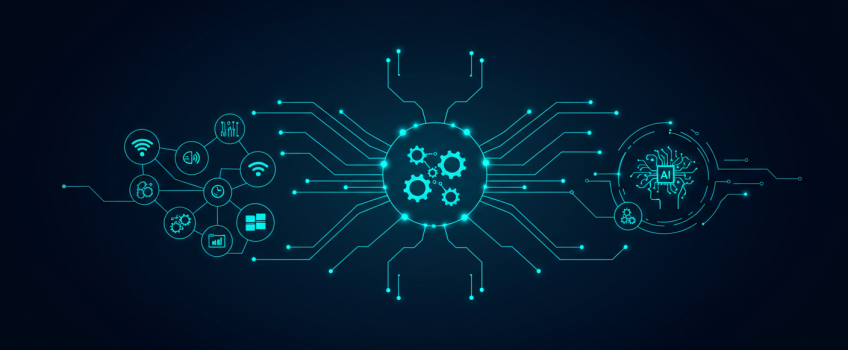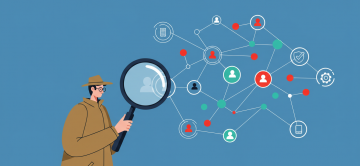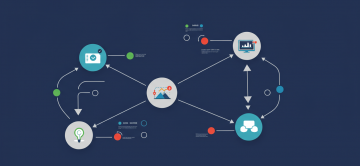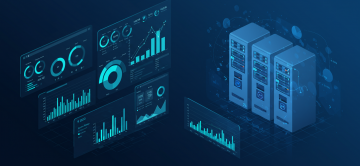Build a Future-Proof Kafka Data Hub for IoT, AI & Services

Building a Future-Proof Streaming Data Hub with Kafka: Integrating IoT, Microservices, and Real-Time AI
In today's hyper-connected enterprise, data streams are relentless. IoT sensors generate constant telemetry, microservices exchange events at a frantic pace, and AI models demand fresh data for real-time inference. The traditional approach of creating point-to-point data pipelines for each new use case quickly devolves into a tangled mess of brittle integrations—a "digital spaghetti" that is impossible to maintain, scale, or govern.
To thrive, organizations must evolve from this chaos to a clean, centralized model: a streaming data hub. This hub acts as the company's central nervous system, providing a single, reliable source of truth for all real-time data. At ActiveWizards, we architect these mission-critical platforms using Apache Kafka, creating a future-proof foundation that can simultaneously serve the needs of IoT, microservices, and AI. This article outlines the architectural blueprint for building such a system.
From Digital Spaghetti to a Central Nervous System
The "digital spaghetti" architecture emerges organically but is devastatingly inefficient. Every system needs to talk to every other system, leading to an explosion of connectors, protocols, and data formats. A change in one system can cause a cascade of failures in others. It’s slow, expensive, and a security nightmare.
A Kafka-based data hub inverts this model. Instead of connecting to each other, all systems connect to the central hub. Producers write their data (events) to Kafka once, and any number of consumers can read that data independently, without affecting the producer or any other consumer. This decoupling is the key to agility and scale.
Diagram 1: Migrating from a complex, point-to-point architecture to a simplified, scalable Kafka Data Hub.
Architectural Blueprint of the Kafka Data Hub
A well-architected data hub is more than just a Kafka cluster. It's a complete ecosystem designed for reliability, governance, and ease of integration. The core components work together to ingest, store, process, and serve data streams to a wide array of applications.
Diagram 2: High-level architecture of a comprehensive streaming data hub.
Let's see how this architecture serves our three key domains.
Spoke 1: Ingesting High-Volume IoT Data Streams
IoT platforms generate a firehose of data from potentially millions of devices. The hub must ingest this data reliably without being overwhelmed. The Solution: Kafka Connect is the workhorse here. Using a source connector like the MQTT connector, the hub can subscribe to data from an MQTT broker at the edge. Data is mapped to Kafka topics, often partitioned by `deviceId` to ensure ordered processing for each device. This pattern isolates the core cluster from the complexities of diverse IoT protocols.
Spoke 2: Decoupling Microservices for Agility
In a microservice architecture, services need to communicate. Synchronous API calls create tight coupling and risk of cascading failures. The Solution: An event-driven approach using Kafka as the event backbone. When a service (e.g., `Order Service`) performs an action, it publishes an event like `OrderCreated` to a Kafka topic. Downstream services (`Inventory Service`, `Notification Service`) subscribe to this topic and react accordingly. They don't need to know about the `Order Service` at all, only about the event. This creates a resilient and highly scalable system.
Spoke 3: Powering Real-Time AI and Analytics
Modern AI applications like fraud detection or personalization engines require data with minimal latency. Batch processing from a data warehouse is too slow. The Solution: The hub delivers streams directly to these applications. Raw event streams (e.g., `Clickstream`) can be processed in real time using Kafka Streams or ksqlDB to create enriched feature streams (e.g., `UserActivityFeatures`). These feature streams can then be consumed directly by an ML model for immediate inference. Simultaneously, Kafka Connect can sink the raw event data into a data lake for long-term storage and model training.
A data hub without strong data governance is just a data swamp. The single most important component for future-proofing your hub is the Schema Registry. It enforces a contract for the "shape" of data written to each topic. This prevents producers from sending malformed data and protects consumers from breaking when data formats change. Critically, it manages schema evolution, allowing you to add new fields non-disruptively. Making Schema Registry a mandatory part of your architecture from day one is a non-negotiable best practice that prevents countless future headaches.
Key Principles for a Future-Proof Hub
Building a hub that lasts requires more than just connecting the pieces. It requires deliberate design choices that prioritize long-term scalability, governance, and maintainability.
- Standardize Data with a Schema: Use a Schema Registry (e.g., Avro, Protobuf) for all topics. This is the foundation of data governance.
- Design for Multi-Tenancy: Use Kafka ACLs and client quotas to securely isolate different teams and applications using the same cluster.
- Plan for Geo-Replication: Use tools like MirrorMaker 2 from the start if you foresee a need for disaster recovery or a global presence. Retrofitting this is extremely difficult.
- Isolate Ingestion with Kafka Connect: Keep the core brokers clean by using Kafka Connect to handle the messy work of interfacing with external systems.
- Master Your Topic/Partition Strategy: Don't just accept the defaults. Design your topic names and partition counts based on data domains, throughput needs, and consumer parallelism.
The ActiveWizards Advantage: Engineering Your Data's Future
As the blueprint shows, a true streaming data hub is a complex, integrated system. The value isn't just in deploying Kafka, but in the expert architecture that weaves together the core cluster, Connect, Schema Registry, and stream processing into a cohesive, secure, and performant platform. Making the right decisions on partitioning, security, schema design, and geo-replication at the outset is the difference between a strategic asset and a technical debt nightmare.
At ActiveWizards, we don't just provide software; we provide the architectural intelligence to build your data's future. Our expertise across Advanced AI & Data Engineering ensures your Kafka hub is not just a pipeline, but the engine for real-time innovation across your entire organization.
Build Your Central Nervous System for Data
Ready to move beyond digital spaghetti and build a scalable, future-proof streaming data hub? Our experts can help you design and implement a custom Kafka architecture tailored to your unique integration challenges.



Comments (0)
Add a new comment: